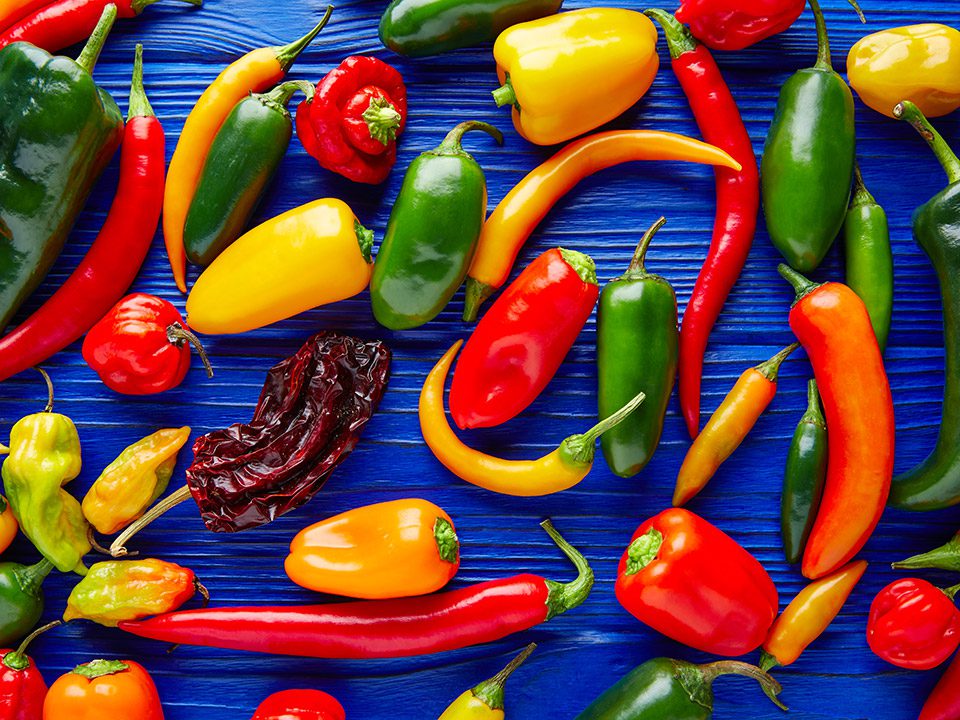If you’re a spice enthusiast who’s always on the lookout for new and exciting flavors, this article is for you! We’re taking you on a fiery journey to explore the top 10 hottest peppers in the world and how to safely consume them. Get ready to embark on an adventure that’ll make your taste buds tingle and your eyes water – but in a good way!
1. Carolina Reaper (1,569,300 – 2,200,000 SHU)
The current Guinness World Record holder for the hottest peppers, the Carolina Reaper, is the brainchild of Ed Currie from South Carolina, USA. With an average heat level of 1.5 million Scoville Heat Units (SHU), this fiery red pepper can cause intense pain when eaten raw. To enjoy it safely, try using a tiny amount in salsas, hot sauces, or chili dishes. Remember to wear gloves when handling and start with a minuscule amount to avoid overwhelming your taste buds.
2. Trinidad Moruga Scorpion (1,200,000 – 2,009,231 SHU)
Originating from Trinidad and Tobago, the Trinidad Moruga Scorpion is a close runner-up in the heat race. Its fruity, slightly sweet taste pairs well with tropical fruit-based hot sauces. As with the Carolina Reaper, handle it with care and use sparingly to avoid a tongue-scorching experience.
3. Ghost Pepper (Bhut Jolokia) (855,000 – 1,041,427 SHU)
Once the world’s hottest pepper, the Ghost Pepper hails from India and is still a favorite among heat enthusiasts. Use it sparingly in curries, stews, and hot sauces. To tame the heat a little, try roasting or smoking the peppers before using them in your dish.
4. 7 Pot Douglah (923,000 – 1,853,986 SHU)
This rare, chocolate-colored pepper from Trinidad and Tobago has an earthy, nutty flavor. It’s perfect for making a rich, flavorful hot sauce or adding a kick to your favorite chili recipe. Keep in mind that a little goes a long way – use it sparingly!
5. Komodo Dragon (1,400,000 – 2,200,000 SHU)
The Komodo Dragon is a UK-bred superhot pepper that boasts a sweet, fruity flavor. While not as well-known as its counterparts, it packs an intense heat. Try using it in sweet and spicy chutneys, jams, or marinades to complement its flavor.
6. Naga Viper (1,349,000 SHU)
The Naga Viper, another product of the UK, is a hybrid of the Ghost Pepper, Trinidad Moruga Scorpion, and Naga Morich. Its fruity and slightly sweet taste makes it a great choice for hot sauces and marinades. Remember to use only a tiny amount, as its heat can quickly become overpowering.
7. Red Savina Habanero (350,000 – 577,000 SHU)
Once considered the world’s hottest pepper, the Red Savina Habanero is still a force to be reckoned with. Its fruity, citrusy flavor is perfect for salsas, hot sauces, and marinades. To reduce the heat, remove the seeds and white membrane from the pepper before using it in your recipes.
8. Scotch Bonnet (100,000 – 350,000 SHU)
Named for its resemblance to a traditional Scottish tam o’ shanter hat, the Scotch Bonnet is a popular choice in Caribbean cuisine. Its sweet, fruity flavor is ideal for jerk marinades, hot sauces, and chutneys. Although not as fiery as some of the others on this list, it still packs a punch, so use caution when adding it to your dishes.
9. Peruvian White Habanero (100,000 – 350,000 SHU)
Originating from Peru, the Peruvian White Habanero is a small, white pepper with a fruity, citrusy flavor. Although not as well-known as its counterparts, it’s an excellent choice for ceviche, salsas, and hot sauces. Make sure to use it in moderation, as it can still deliver a potent kick.
10. Thai Bird’s Eye Chili (50,000 – 100,000 SHU)
A staple in Thai cuisine, the Bird’s Eye Chili is small but mighty. It offers a sharp, clean heat and a slightly fruity flavor. Use it in stir-fries, curries, and dipping sauces for an authentic taste of Thailand. Due to its small size, it’s easy to accidentally use too much, so be cautious when adding it to your recipes.
General Tips for Eating Hot Peppers Safely:
- Start small: Begin with a tiny amount and gradually increase as your tolerance builds. It’s easier to add more heat than to take it away!
- Wear gloves: Protect your skin from the capsaicin, the compound responsible for the heat, by wearing gloves when handling hot peppers.
- Pair with dairy: Dairy products such as milk, yogurt, and cheese can help alleviate the burning sensation caused by capsaicin.
- Cook with caution: When cooking with superhot peppers, make sure your kitchen is well-ventilated to avoid inhaling the spicy fumes.
In conclusion, the world of hot peppers offers a thrilling adventure for those who appreciate the exhilarating heat and unique flavors. By starting slow and using caution, you can safely and enjoyably explore the diverse range of tastes and heat levels that these remarkable peppers have to offer. Remember to always respect the power of these fiery peppers, and most importantly, have fun experimenting with them in your culinary creations!


